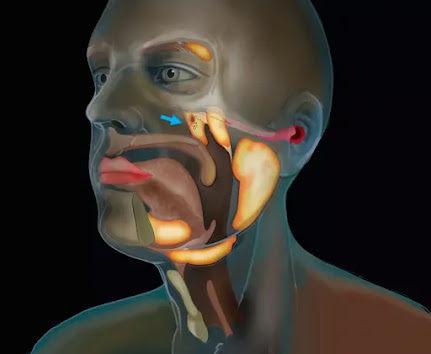Scientists have discovered a new organ: a set of salivary
glands set deep in the upper part of the throat.
This nasopharynx region — behind the nose, was not
thought to host anything but microscopic, diffuse, salivary glands; but the
newly discovered set are about 1.5 inches (3.9 centimetres) in length on
average. Till now it is known that there are only three main Salivary Glands in
human body but, this new organ “interstitium” claimed to be. The country where it’s
found that is Netherlands and the institute is Netherlands Cancer Institute.
Parotid
Gland:
It is the largest gland of our body and secretes nearly 20 - 30
% of saliva in the body. It is present near last molars that is ears and it is
also a exocrine gland which secrets it secretion through ducts to the last
second molars.
Submandibular
Gland:
It is the second largest gland of our body and secretes nearly 65 - 70 % of saliva in the body. It is present below the tongue that is ears and it is also a exocrine gland which secrets it secretion through ducts.
Sublingual
Gland:
It is the smallest gland of our body
and secretes nearly 5 - 10 % of saliva in the body. It is present near the tongue
and it is a exocrine gland.
Discovery: “Interstitium”
This kind of discovery in human body is made after 30 years. The discovery was accidental. Researchers at the Netherlands Cancer Institute were using a combination of CT scans and positron emission tomography (PET) scans called PSMA PET-CT to study prostate cancer. In PSMA PET-CT scanning, doctors inject a radioactive "tracer" into the patient. This tracer binds well to the protein PSMA, which is elevated in prostate cancer cells. Clinical trials have found that PSMA PET-CT scanning is better than conventional imaging at detecting metastasized prostate cancer.

Good work
ReplyDelete